In 2015, the Center for a New American Security published Retreat from Range, by Jerry Hendrix, a respected naval historian and former naval flight officer.1 In it, he argued that the range of US carrier air wings had fallen precipitously since the 1950s as it abandoned its deep-strike capabilities in favor of a focus on sortie generation and low costs. With the rise of weapons like the Chinese DF-21, this is unacceptable, and new aircraft need to be developed. This report has received extensive media attention, with several outlets taking up the cry for more range out of carrier wings.
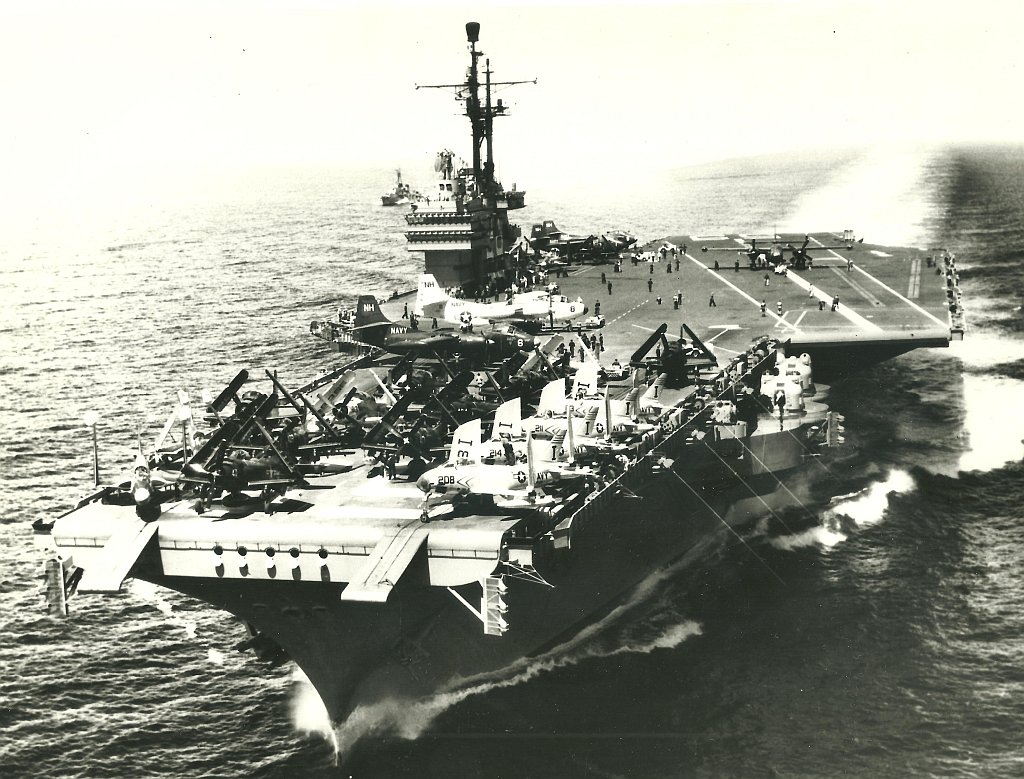
Forrestal during her shakedown cruise in early 1956
Unfortunately, a large part of the report's thesis is wrong. Leaving aside that the threat of weapons like the DF-21 is grossly overrated, his analysis of the range of US carrier wings is dangerously flawed. Simply put, the numbers Hendrix gives for his 1956 carrier aircraft are completely wrong. They seem to have been generated by googling each of the aircraft in question, and then taking the values for "max weapons load" and "max range" and slapping them together. Anyone with any serious exposure to aircraft should immediately recognize that this is not the right way to do this. Payload affects range, particularly when it's being carried on the outside of the plane and displacing drop tanks. Not accounting for this speaks of at best extreme carelessness on the part of Hendrix and CNAS.
To prove this, I'm going to examine some of his claims in more detail. I'll be basing my work on the Standard Aircraft Characteristics Archive. The SACs are exactly what the name implies, half-dozen page documents that detail the aircraft's performance, including missions that have both bomb loads and ranges. This level of detail is rarely found even in the best reference books, and it lets us see exactly what the airplanes are capable of, and contrast that to the values Hendrix gives. His hypothetical air wing is the one that flew off the Forrestal class in the late 50s, and I was able to find SACs for all of the planes he mentions.
The AD Skyraider
“The AD-1 was both famous and infamous for the power of its radial piston engines. Capable of carrying 8,000 pounds of ordnance over 1,000 nm to a target,” (p.24)
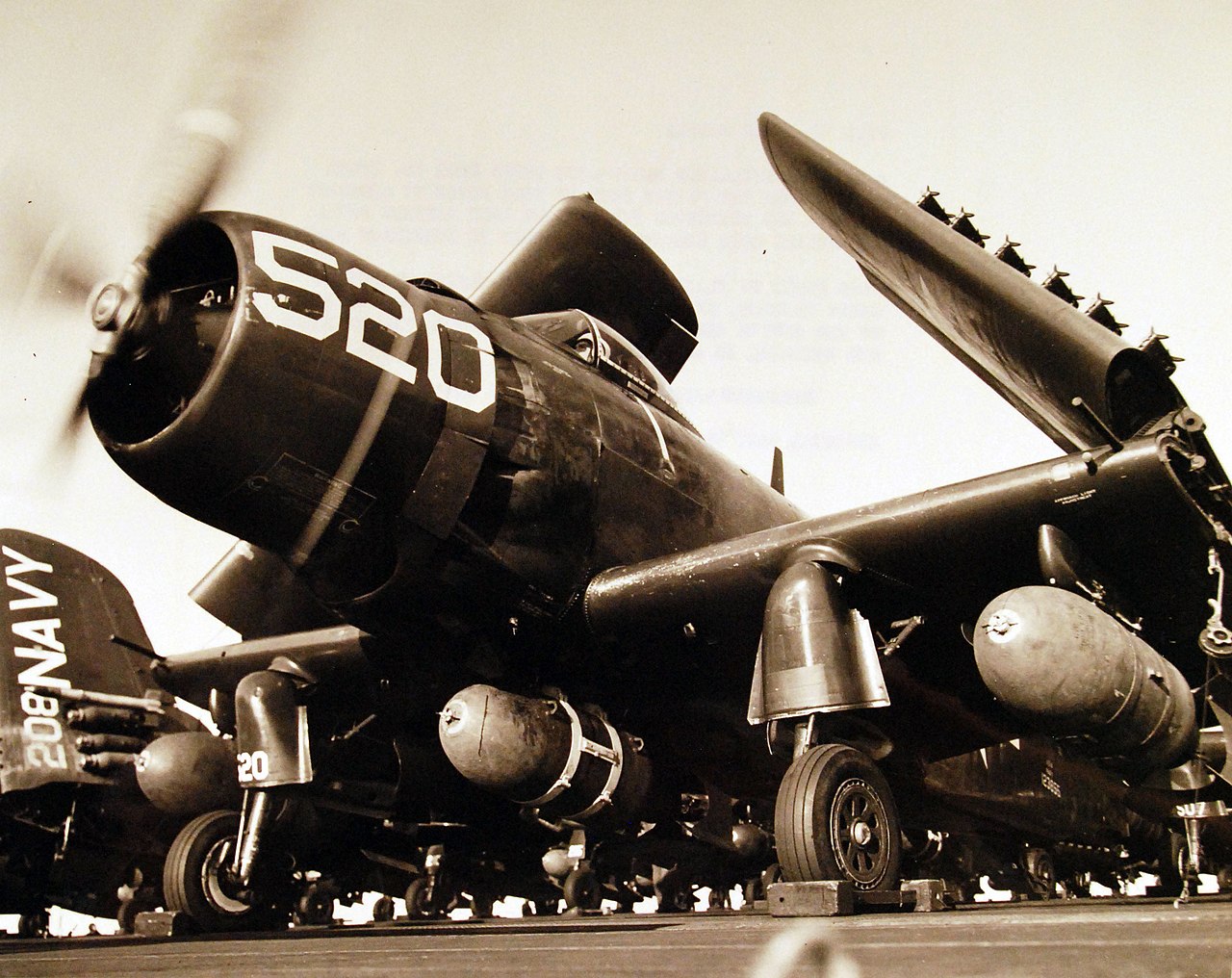
AD-4 Skyraider
First, the AD-1 isn't the appropriate variant. Improved models entered service quickly, and a 2014 book lists every air wing that Forrestal ever carried, none of which included a version earlier than the AD-6 in the attack role. But I will attempt to take Dr. Hendrix's statements at face value, and look at the planes he said he analyzed. The SAC archive also doesn't have an AD-1, so I decided to go with the AD-4, the earliest available. This lists three missions, one of which involves a radar pod and can thus be ignored. Of the other two, one is a long-range mission with drop tanks, and carries 3,680 lb of ordnance with a combat radius of 540 nautical miles. The other is a short-range mission without drop tanks, and carries 5,680 lb of ordnance to 220 nm. The first is the sort of thing you'd expect for a deep-strike mission, and it doesn't come close to 1,000 nm or 8,000 lb of ordnance. Looking at the numbers, it seems like he might have confused radius and range, which is a perfectly understandable mistake for a random person on the internet, but much less so from a professional. It's also incredible that he assumed the max warload the plane was designed to carry was the relevant payload, as an AD loaded with that many bombs would probably have a combat radius about equal to the takeoff roll.
The F2H Banshee
"The Banshee’s sturdy design and large fuel load gave it the ability to carry 3,000 pounds of ordnance to targets nearly 1,500 nm away." (p.25)
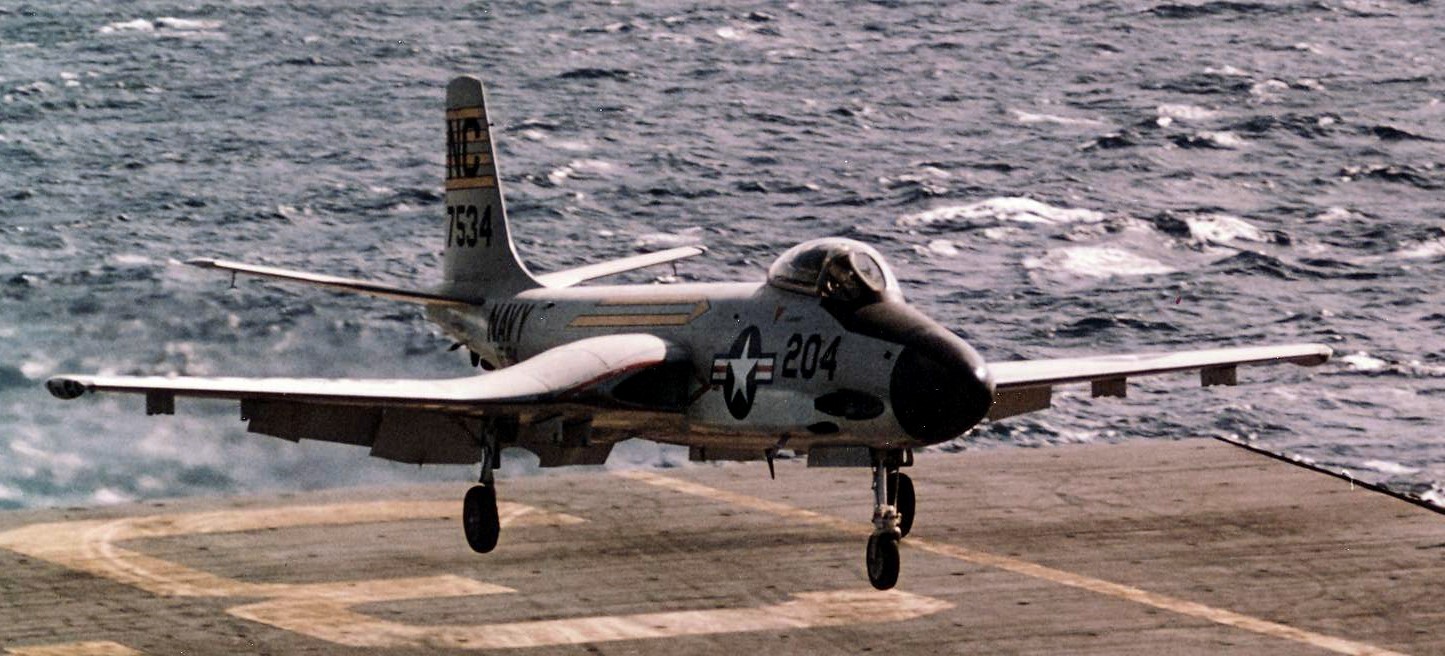
F2H-3 Banshee
Hendrix earlier identifies the model in question as the F2H3, which is clearly a misprint for F2H-3, so I pulled the appropriate SAC. There's only one ground attack mission listed, and it lists 1,580 lb of ordnance, 2,040 lb of external fuel, and a radius of 330 nm. The only range number on the sheet close to his 1,500 nm is the combat range (again not radius) for the fighter configuration (no air-to-ground ordnance) with two drop tanks, and this is obviously not a viable strike configuration.
The FJ-3 Fury
"The FJ3 represented an evolution in the aircraft’s design, shifting it from a pure fighter configuration, carrying only air-to-air missiles and four 20mm cannons, to a fighter/bomber role with the addition of two inboard pylons capable of carrying 1,000-pound bombs and two outboard pylons capable of carrying 500-pound weapons. These weight limitations meant that it was not nuclear delivery capable, as these bombs weighed more than 1,000 pounds at this point in their development. The Fury’s combat radius was only 650 nm, but with aerial refueling, its range could extend to nearly 1,250 nm. Aerial refueling, a relatively recent technological innovation, enabled the Fury to provide fighter escort services for the A3D Skywarrior..."
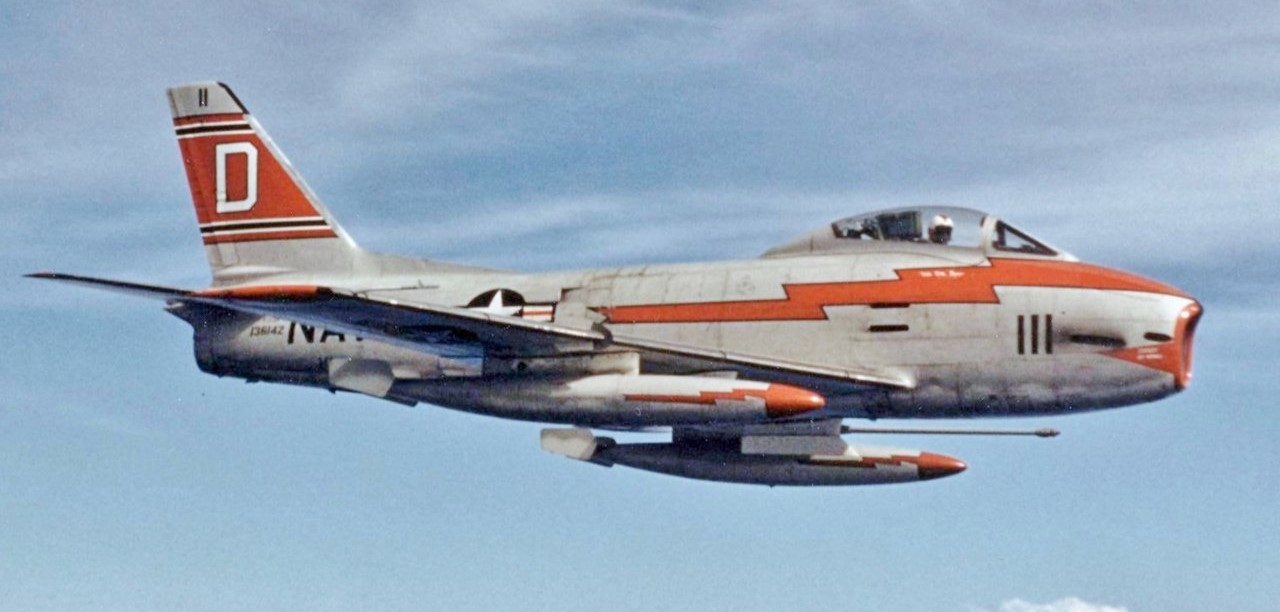
FJ-3 Fury
First, we have another butchering of the designation system, as the correct form is FJ-3.2 This one avoids explicitly linking payload and range, and even suggests that he's looking at range in a fighter configuration instead of an attack configuration. And the SAC gives numbers a lot closer to his values in that case, although it's still not quite right. The fighter (400 gallons external, no other ordnance) configuration gives a radius of 560 nm unrefueled and 1075 nm with an inflight refueling. So he's only off by 10-15% (although still rather optimistic), but this is also the only case where there is no ordnance, the real source of problems in his numbers so far. For the record, the SAC does have one ground-support configuration, with 1,147 lb of ordnance, 400 gallons external, and a radius of 245 nm.
The A3D Skywarrior
"The Skywarrior was the culmination of the ADR-42 heavy bomber program. It was capable of carrying 12,800 pounds of ordnance, nuclear or conventional, 1,826 nm."
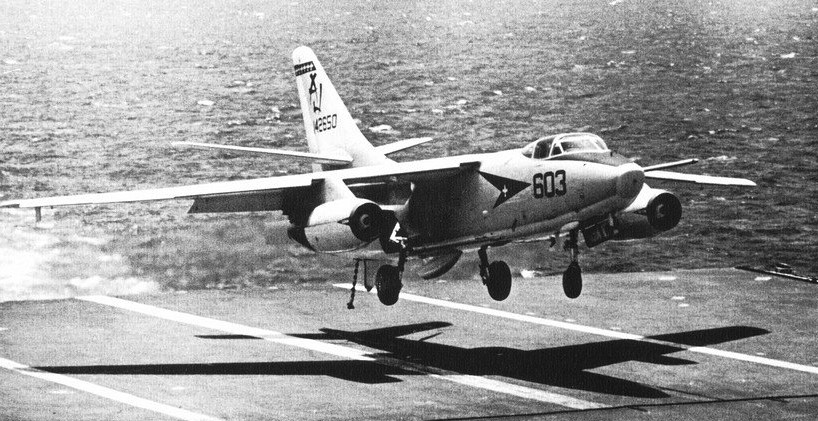
A3D-2 landing aboard Forrestal
This is almost certainly the A3D-2/A-3B Skywarrior, as the earlier A3D-1 was only used for development. The SAC gives a maximum takeoff weight of 73,000 lb from a carrier's catapult,3 and a radius at this weight with a pair of 2,050 lb stores of only 1,200 nm.4 Technically speaking, it's possible that Hendrix was speaking in this case of range instead of radius, in which case he would have actually underestimated the A3D's range, but this is unlikely, as he holds out the A3D, quite rightly, as the longest-ranged member of the carrier wing. As such, I can only treat his number as a radius claim, and note that even an unarmed A3D fully loaded with fuel couldn't make it to a target 1,820 nm away and back, nor could a carrier-launched A3D with an inflight refueling.
The A4D Skyhawk
"The Skyhawk’s max speed was 550 knots. Its top altitude was just over 40,000 feet and combat range was 550 nm unrefueled (it did not have external fuel tanks) while carrying up to 9,000 pounds of ordnance of all types, including nuclear weapons."
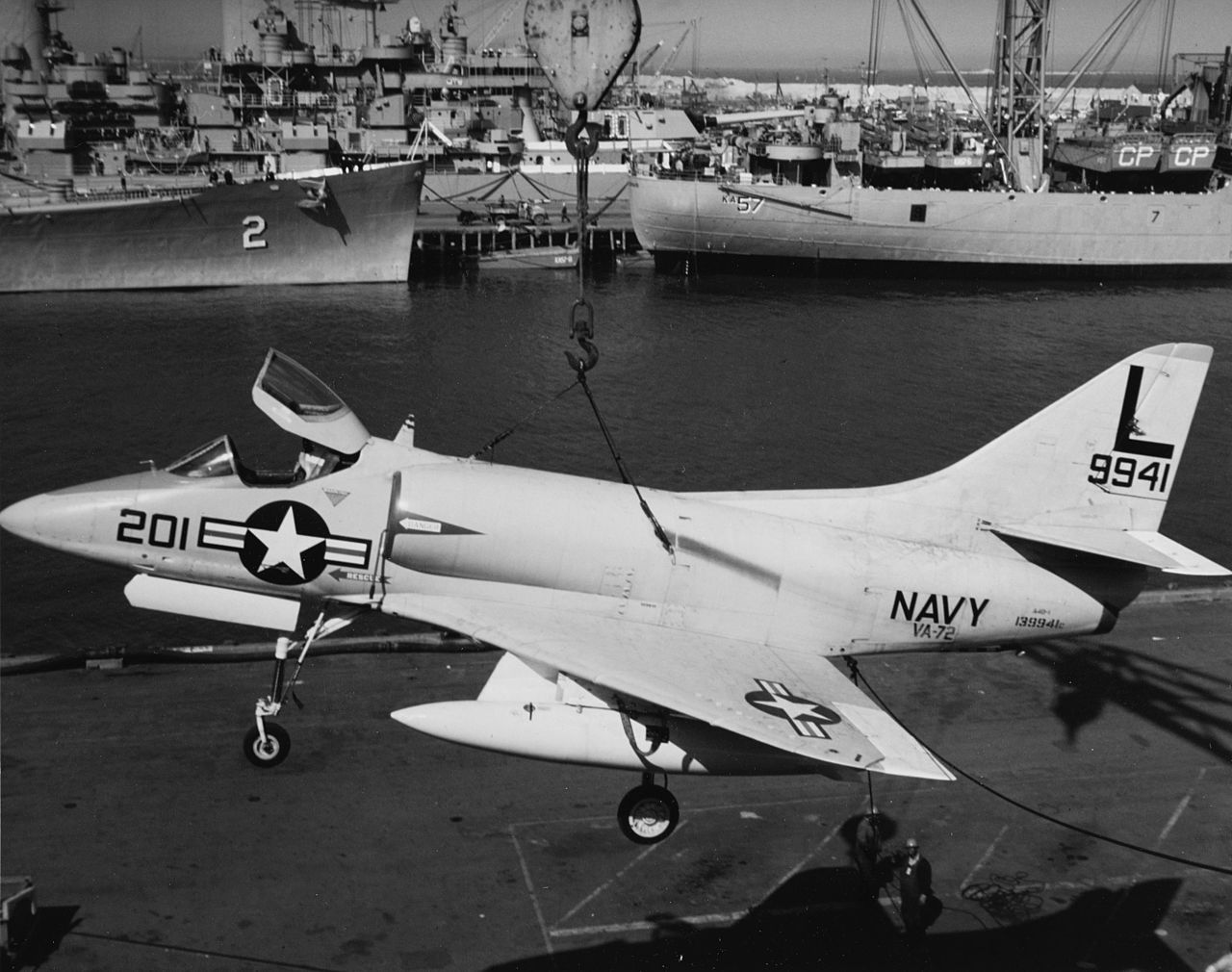
Even while being hoisted aboard, the A4D-1 Skyhawk retains its signature drop tanks.
The first thing that springs out at me from this is the claim that the Skyhawk does not have external fuel tanks. This is hilariously wrong, as operational Skyhawks almost always carried a pair of large external tanks. The lead-in to the parenthetical seems to suggest that he meant to say the A4D had no in-flight refueling capability and was merely sloppy. This looks to have been true for the A4D-1, which entered service in October 1956 and will thus form the basis of this analysis, but incorrect for later models. The SAC gives several different missions, two of which have no external tanks. If we humor him and use these, then the radius is approximately 175 nm for about 2,000 lb of ordnance. If we instead base it around the Skyhawk as actually used, we have a choice between 575 nm and 1,050 lb of ordnance and 385 nm and 3,500 lb of ordnance. The SAC also provides data on some other attack altitudes. 1,050 lb of ordnance gives a radius of 625 nm if delivered from 15,000 ft,5 but only 410 nm with a 50 nm run-in at sea level. But I'm going to score this based on the text sample, and ignore the external tanks.
The A-5 Vigilante
"the Vigilante could fly nearly 1,300 nm unrefueled, delivering a 1,700-pound nuclear weapon while traveling twice the speed of sound."

An A-5A Vigilante in flight
Hendrix does acknowledge that the Vigilante wasn't part of his 1956 airwing,6 but although it didn't enter service until 1961, we'll take a look at it anyway, based on the SAC for the A3J-1/A-5A. It gives two supersonic high-altitude attacks with Mk 28 store (1,885 lb, and I'm not sure why he underestimates this), which is exactly the sort of strike Hendrix seems most interested in. The one with a pair of drop tanks has a radius of 945 nm, and the highest speed I can find in the SAC is around Mach 1.7, not Mach 2. If we assume that 1,300 nm is the range instead of the radius, then the Vigilante actually exceeds his performance specifications, but as with the A3D, this seems like an overly generous reading, and I will instead treat the claimed value as a radius.
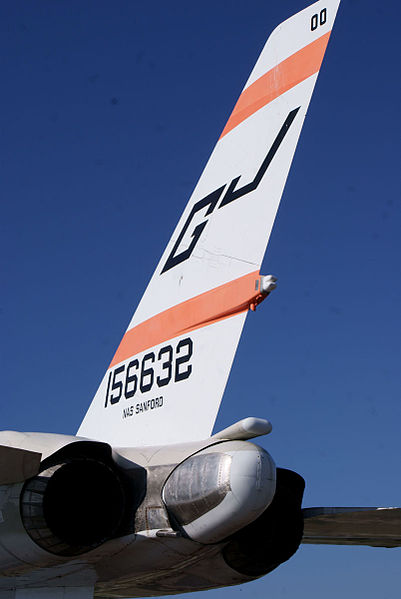
The tail of a Vigilante, showing the back end of the linear bomb bay, here plugged by the temporary tail cone of an RA-5C reconnaissance model.
So shouldn't the score be something like "Factor of 1.5 on range, correct on payload"? Well, no. The problem is that the Vigilante wasn't really capable of delivering bombs. It used a unique linear bomb bay, storing the Mk 28, attached to a pair of drop tanks, in a tunnel between the engines. This was intended to allow the Vigilante to drop bombs while supersonic, a problematic task for a conventional bomb bay, but in practice, it didn't work very well. The ejection mechanism was unreliable and occasionally a catapult shot would leave the so-called "stores train" sitting on the ship's deck. But the worst failing had to do with aerodynamics, with the desired accuracy proving totally unachievable.7 Before this could be solved, the Navy's priorities shifted, with Polaris taking over the strategic attack mission. The Vigilante only made four operational deployments as a bomber before the bulk of the fleet was converted to the RA-5C reconnaissance configuration, none aboard Forrestal, and even on those deployments, only a very marginal capability was provided.8
I've picked on the 50s air wing because it was the easiest to evaluate, but his abuse of numbers continues throughout the paper. Checks of the F-4 and A-7 SACs reveal similar exaggeration to the rest of the numbers given, with bombloads that are twice what the aircraft actually carried and range numbers that require at very least a substantially lighter bombload. Unfortunately, the SACs for modern aircraft are not available to the public, so I can't settle the interminable debate over how far a Hornet or Super Hornet can actually go. I was able to take a look at this using Command: Modern Operations, and the basic answer is that while an Intruder does have some range advantage over a Super Hornet, the versatility and higher speed of the more modern aircraft goes a long way to make up the difference.
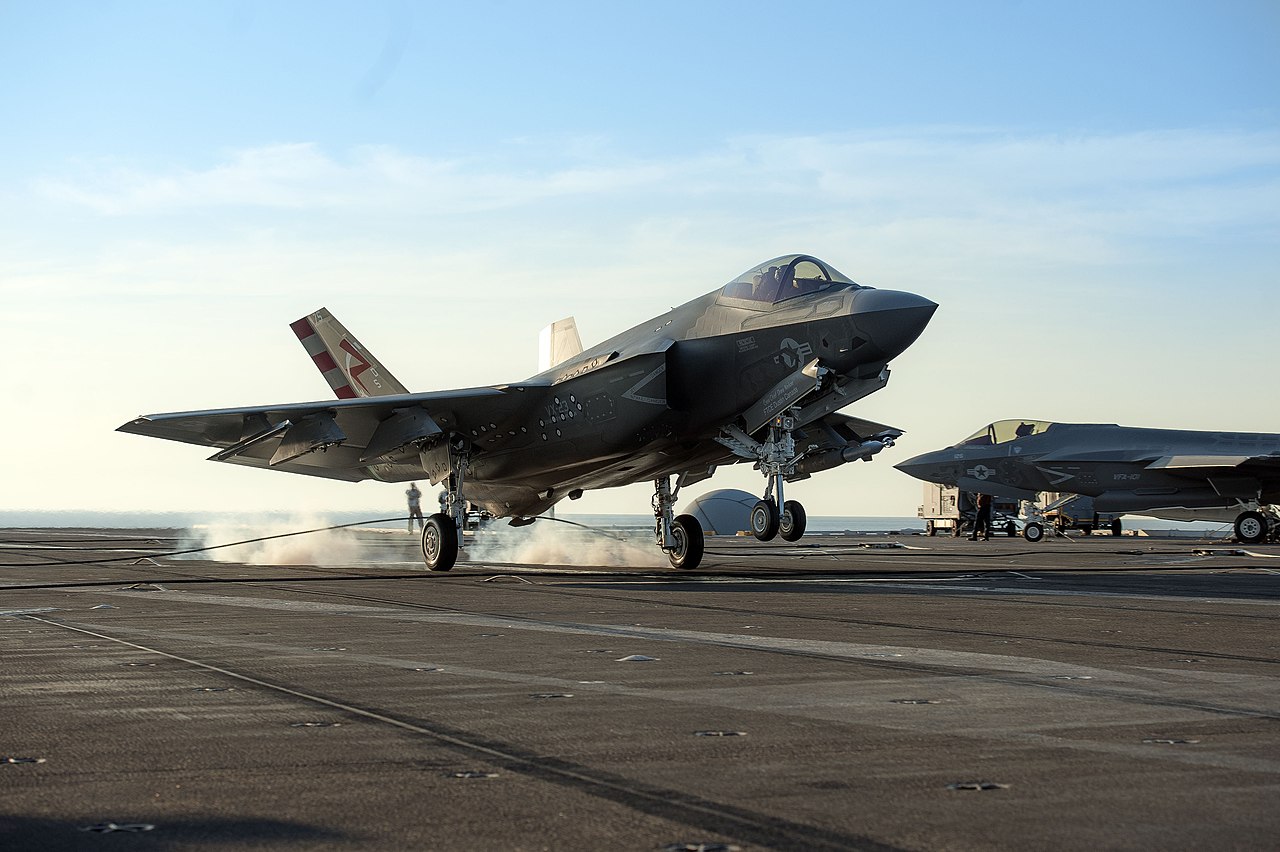
An F-35C landing aboard USS George Washington
Nor are the numerical problems limited to aircraft performance. On page 57, Hendrix claims that the F/A-18E/F cost $85 million less per aircraft than the F-35C, a value that doesn't even match the numbers given elsewhere in the paper of $85 million for the Super Hornet and $130 million for the F-35C, to say nothing of the actual values. The current values are something like $66 million for the F/A-18E/F, and $110 million for the F-35C, although figuring out values for this kind of stuff is always complicated. Moreover, the F-35C is not particularly mature, and the cost is likely to fall further as production ramps up, with the latest contracted batch running around $94 million each. It's also worth pointing out that the Navy is rushing the MQ-25 Stingray into production to plug the tanker gap that Hendrix discusses, with a deck operations trial in late 2021 aboard George H W Bush, although the program was still in the early stages in 2015, when the paper was written.
Overall, Hendrix's claims on the future of the American carrier force fail to stand up to scrutiny. Retreat From Range is riddled with math errors of the sort that should not be made by anyone who has a basic acquaintance with military aviation, and the story of falling range is much less dramatic when accurate numbers are used. Hendrix and CNAS as a whole should have done better.
1 This means that he was someone who operated aircraft systems instead of flying planes, specifically on P-3 Orions. ⇑
2 The Fury is unusual in that the FJ-1 was a straight-wing predecessor to the famous F-86 Saber, while the FJ-2, FJ-3 and FJ-4 were navalized derivatives of the F-86. Note that the later FJ-4 was nuclear-capable, but he didn't call that out, probably because it never deployed aboard Forrestal or her sisters.. ⇑
3 Two important footnotes to this number. First, Hendrix claims that the max takeoff weight of the A3D is 83,000 lb, a number completely unsupported by the SAC. Second, the weight for a field (non-catapult) takeoff is indeed 5,000 lb higher, and the SAC lists a second set of range figures for this configuration. But since we care about the carrier's strike range, those are irrelevant. ⇑
4 The SAC provides some interesting details on this high-altitude number. If a sea-level approach is made at cruise throttle, radius is reduced 60 nm for every 100 nm flown at SL. If the approach is made at military (max sustained) thrust, it drops 120 nm for every 100 nm of approach. ⇑
5 The baseline involves diving to sea level for deliver from cruise. ⇑
6 To be extremely pedantic, his 1956 airwing is entirely wrong. Forrestal made two cruises in 1956, and neither even comes close to matching the described airwing. The first had F2H-3s, FJ-3s, F7U-3Ms, AD-6s, and a detachment of AJ-2s. The second had F2H-3/4s, F9F-8/8Bs (assigned as an attack squadron) and AD-6s. The first deployment with A3D-1s (which were deployed at sea according to this source, which contradicts my earlier research) was in January of 1957, alongside F3H-2Ns, FJ-3Ms, F9F-8Bs and AD-6s. A4Ds didn't get aboard Forrestal until 1958, and they were A4D-2s. Nor does the wing given by Hendrix match any other deployment of Forrestal's sisters. ⇑
7 Reports of the Vigilante "towing" the stores train are false, although widely believed. Accuracy was equally bad if not worse for external stores. ⇑

Comments
...Thoughtful and well done critique - bravo!
One thought about the weight discrepancy on the A-5C's Mk28 - is it possible that the empty fuel tanks were included in the initial weight, and he simply counted the weight of the device itself?
Mike
Possible. Swords of Armageddon gives the 1,885 lb weight for the A5J bomb assembly including fuel tanks, but I can't find a reference to any other B28 variant in SoA that is lighter than that value. The wiki article lists a minimum weight of 1,700 lb, but doesn't give a source. It's not an implausible minimum weight, although 185 lb sounds pretty light for a pair of 400-gallon tanks. Based on a quick google, that seems right for a single tank of that size, although that's an external drop tank, not an internal one. I wouldn't be hugely surprised if 1,885 lb is the actual weight of the weapon and Hansen misread the NATOPS manual he cites.
What is the limiting factor of range with in-air refueling? The only things I can think of are how far out the refueling craft can go, crew endurance, or the plane only being able to refuel a small number of times without maintainence.
Trick is to refuel the refuelling craft.
(Leading to tyranny-of-the-rocket-equation-esque exponential blowups.)
Over half of the refuellings needed for Black Buck I were victor-victor.
Range of a Hornet: Time to break out the Reynolds numbers and get crunching?
@Eric Rall The limit is the lesser of crew endurance and tanker availability. If you have lots of tanker support, you can fly 12+ hour missions in F-16s ("Can." Not, as a rule, "should."); but most non-US air forces would probably run out of tankers well before their fighter pilots reached the point of absolute exhaustion.
@Eric
In principle, there's no limit on the range of an aircraft using aerial refueling. (See Black Buck). In practice, you have several issues. Besides crews and tankers, there are some bits that simply can't be filled in flight. Engine oil is the most likely one. In this case, the SAC has a specific profile with a single refueling, which is what I used and what I assume Hendrix meant in the quoted paragraph.
As someone who literally sells numbers about aircraft for a living, I can assure you that most numbers relating to aircraft are, if not outright lies, as least potentially misleading. Aircraft are complicated things, and the correct answer to almost any question, even simple things like wingspan or the number in service will start with "Well, it depends, are you counting..."
Any single number for an aircraft range is a straight up lie. How much fuel it carries, how quickly it burns the fuel, what sort of routes the aircraft has flown in the past, those might be real, but the correct answer for range is always, always starts with "Well, it depends..."
Also Bean, just FYI, flyaway cost is USUALLY a better figure to use when you're quoting from DoD budgets.
Of course, as I say that, I'm also deeply skeptical of the current figure of 66 million per for super hornets. That's basically basically on the level with what F-16s are costing these days, but the navy has been reporting something like that figure for a few years now, so what are you going to do?
In retrospect, I'm kicking myself for sorting through the FY20 budget instead of just emailing you. You actually know what you're looking for, while I saw a confusing mass of numbers, and decided to grab the highest one, just to be safe. If I'd seen a clear label of "flyaway", I definitely would have picked it, but I didn't, and so decided to grab the highest numbers I saw just to be safe. If they're buying Super Bugs for 66 million, what are F-35Cs going for?
What faction of the military do you think this was written to support? Team heavy bomber, or just the anti F-35 wing of the navy?
@VQG I don't know if it was the goal of the writer, but it sounds pro MQ-25, and perhaps pro integration of standoff weapons, or conformal fuel tanks for the Super Hornet.
I think Hendrix is generally on the anti-carrier wing, and he's advocated for heavy bombers in the past.
@bean
The aircraft they're taking delivery of this year will cost about 110m, but they've signed contracts for the next couple years that see the price dropping down to 94m in lot 14. And it's anyone's guess what the Block 3 Super Hornets will cost so really, it depends on what you count. : )
I've edited in those values, as well as the $66 million for the Super Hornets. Thanks.
I thought I added in an addendum, but it seems to have been swallowed by the aether. In 2015, when the article was written, the cost for an F-18 was ~60m, and the projected average for the whole run of F-35C was about 145m. I'm not sure why it was so high, it wasn't unexpected or unplanned that the costs would fall, but it does mean that the 85 mil difference in 2015 was at least grounded in the official figures. Of course, there's still no excuse for inconsistently quoting the unit price elsewhere.
As I recall, the one seat Legacy and Super Hornets both have substantially better internal fuel capacity (+10% or more, I've seen different figures) due to space not getting taken up by the extra man. that's not going to eliminate the gap, but it's not insignificant either.
How would an intruder with buddy pods compare to the MQ-25 as a tanker?
@cassander - The C and E as examined above are the single-seat Legacy and Super Hornets. The two-seaters are the D and F; they'll have less range than the above, widening the range/payload gap.
Bean, a 1001 apologies if this sounds like a quibble as it definitely is not meant to be. At the beginning you say that the Hornet "ran out" at 223 NM and the Intruder at 290 NM while the high altitude flights "hit bingo" at their distances.
Are you saying that the low flying Hornet flamed out at 223 NM while the high fliers had to bingo back to the boat? Just curious as bingo normally means a decision fuel state and not a flameout state and from the numbers you gave for the high fliers it would seem to be this is what you were saying. Just a little confused over the "ran out" term.
Do the charts give an equivalent Mach for the Hornet and Intruder at their 480 and 415 KTAS?
Also, can the Hornet climb all the way up to 360 with all those external stores?
Since I don't think I mentioned it at the time – your critique was really good work.
It seems pretty clear that [assuming we had kept A-6s and F-14 airframes and upgraded their weapons systems] two Tomcats and two Intruders would be better than four Super-Hornets (the Intruders would have more bombs; the Tomcats would have more missiles) but on the other hand, that's not considering the expense of maintaining the two separate airframes.
With that being said, I think a somewhat overlooked disadvantage of multirole aircraft is that their pilots are splitting their time between routine carrier-related training [the most important thing to be proficient in], ground-attack training, and air-combat training, and as a result they are less proficient at each. I suppose it's still possible to split squadrons into fighter and attack squadrons, but I haven't heard of it.
On the gripping hand, nobody wants to not have a way to shoot back. But then again, A-6s and A-7s already had that with the Sidewinder before the Hornet and Super Hornet.
@Alexander
Based on some quick googling, the MQ-25 seems to have approximately the same fuel offload as the KA-6, although I can't find official numbers on this.
@Neal
All of the numbers given are bingo numbers, although my stylistic rendering may have obscured it. I don't remember knot equivalents for the speeds, sorry.
@Suvorov
I'm not sure that training is nearly as much of a problem for multirole aircraft as you might think. Modern GUI-type systems are a lot easier to train on and use than the previous generation of computerized combat systems, to say nothing of the sort of stuff those airplanes replaced. The desire for this has driven platform upgrades in at least one case I'm aware of, and when the system is relatively intuitive to use it's a lot easier to train people on it, which reduces the penalty for multirole training.
I certainly believe that modern GUIs have made multirole aircraft easier to use – and, as I understand it, they have allowed us to do away with the need for the RIO and bombardier seats, as cassander mentioned, which seems like a huge improvement. But F-4 pilots were competent at using their aircraft as multirole weapons platforms. My concern is less that pilots would not be capable of operating the weapons systems and more that they would not be as tactically proficient as possible. There's more to soldiering than being able to competently operate your weapons!
I don't think it's any cause for grave concern – U.S. pilots are probably better trained than our adversaries – but just as single-mission aircraft are more likely to be better at their mission than multirole aircraft, so too are their pilots likely to be more experienced in practicing their mission, even if modern GUI and weapons systems can do a lot to bridge that gap.
The main concern regarding readiness I've heard from naval aviators in the US has been around finding any time to train at all between flying ground attack missions in the Middle East and maintenance. This is a problem that the Air Force is running into as well. Put simply, we don't have as many planes and pilots as we used to at the end of the Cold War, and simultaneously, we're asking them to fly to more places carry out more missions.
While I still think that US pilots are better trained that pilots from any other military in the world, I also think that question is somewhat irrelevant. What really hurt US Air Force and naval aviation in Vietnam wasn't that our pilots couldn't outfly North Vietnamese pilots. What hurt was the fact that our pilots couldn't outfly North Vietnamese pilots and North Vietnamese SAMs at the same time.
I think we could say something similar about the situation today. In a prospective great-power conflict, our pilots are going to be going up against surface-to-air systems that have taken just as much advantage of the advances in electronics as our aircraft. While stealth does help with this, stealth is not (and was never claimed to be) a panacea.
My real concern is that our pilots have flown so many missions in relatively permissive airspace, that they've atrophied their skills in penetrating hostile airspace, especially airspace rendered hostile by new surface-to-air systems like the S-400. This is something that we were superb at during Desert Storm, using a combination of stealth and SEAD to substantially degrade Saddam Hussein's air defenses prior to the ground invasion. I wonder if we could pull off such a feat today, now that our adversaries have had twenty-seven years to think about how they'd deal with stealth.
@Suvorov
I think the issue of maintenance is an underrated one. The F-14, to me, is like the Italian sports car of naval aircraft. Excellent performance... when it's not in the garage. The Tomcat was notorious for being a "garage queen" because of the complexity of its swing-wing mechanism. As a result, it's plausible to me that one actually gets better readiness out of a fleet of all F-18s, because it's a simpler airframe and the standardization simplifies the spare parts situation.
As I heard Secretary Spencer say in a speech once, sometimes it's worth a certain amount of capability to have a large increase in readiness. A flying F-18 contributes far more air-to-air capability than a F-14 in the hangar.
I'm probably too attracted to multirole aircraft (and indeed ships) so my first thought was that if an Intruder can also fill the tanker role, then the fact that is an efficient bomb truck (at least against less heavily defended targets) makes it a better use of hanger space than the Stingray. Being able to loiter for longer or carry a greater payload would be very valuable for a lot of the attack missions US aircraft have performed over the past couple of decades. In a less one sided conflict they would give the air wing the same extra range that MQ-25s offer. I don't know if it would have been easier to develop an optionally manned Intruder than the Stingray, but I would imagine something like that is possible.
@Alexander
The problem is that some missions play together better than others, and anything to do with weapons makes life a lot more difficult. An optionally-manned bomber/tanker/surveillance plane is going to cost a whole lot more than an unmanned tanker/surveillance platform. You need to make sure it's man-rated for when the pilot is in the plane, and you need all the stuff to support weapons, which raises everyone's paranoia. So if we primarily need a tanker, we can easily bolt on some sensors, but bolting on bombs and a pilot is not nearly so easy.
(All this ignores the fact that optional manning is basically just a red herring to distract the "everything should be a UAV" brigade. You're paying all the costs of manning in terms of weight, cost, and certification, and raising all sorts of questions in terms of things like crew proficiency.)
And if we're trying to penetrate airspace defended by S-400s, we're probably also going to be dealing with airspace defended by Flankers (or even 5th gen fighters), which are much more of a comparative threat than Iraq's fighters were at the time. As you pointed out, that was what was part of what was so troublesome in Vietnam.
We also had three different dedicated SEAD jets in Desert Storm. I wonder if hanging HARMs off of F-16s (which is awesome, don't get me wrong, being able to put anti-radiation missiles on as many aircraft types as possible is unambiguously good!) will be able to compensate for the apparently loss in dedicated airborne jamming assets.
In the Tomcat's defense, it's not especially fair to compare a 30 year old airframe with a 5 year old one (as people were doing with Super Hornets and Tomcats around the turn of the century) – but yes, I agree that maintenance is a very underrated aspect of aircraft performance, and of course the Tomcat's swing wing is going to be a maintenance nightmare, comparatively. I brought up the F-14 more because it was the logical alternative to escort A-6s and less to argue that we should restart the production line.
Interestingly, stealth aircraft are also supposed to be "garage queens," – I wonder if the F-35's stealth coatings will end up being less maintenance heavy than earlier stealth aircraft or if they will replace the Tomcats in the hangar.
"Suvorov said... My real concern is that our pilots have flown so many missions in relatively permissive airspace, that they’ve atrophied their skills in penetrating hostile airspace, especially airspace rendered hostile by new surface-to-air systems like the S-400."
...There's something to be said for that viewpoint, and almost certainly we're going to take losses because of it in The Next Unpleasantness. Keep in mind though that the point of RED FLAG and TOPGUN is to give our guys that experience, and those units do an amazing job especially when it comes to the electronics side of things. That aspect of the exercises tends to be overlooked in the furballs and explosions, but it's a vital and constantly upgraded one. We can always use more and better experience; absolutely, but I'm reasonably confident that we have been working on ways to tamp down the threat. As far as the F-16 SEAD goes, I worked with them with 20FW at Shaw AFB, SC - the East Coast Weasels. HARM may be getting a little long in the tooth, but it's still surprisingly up to date and should be more than capable of dealing with anything they can reasonably come up against. The problem is if we end up against a peer adversary, we should be able to knock down the SAM threat - but at the price of the Weasel force. We don't have a dedicated jammer - the idea (as I understand it) is that the EF-18 Growler force will support USAF and USN ops, and that's fine...until they can't, or the carrier's gone. We need to perhaps get the Growler's electronics onto an F-16 and get back into the tactical jamming business.
Just my .02, YMMV.
Mike
Mike, there are a couple of land-based Growler squadrons dedicated to supporting USAF operations. I agree that the USAF getting out of the jammer business was stupid, but it's not like they don't have any support on it.
@bean
Just want to let you know that you're not alone in being frustrated about the inability of finding reliable MQ-25 stats. It's not quite as frustrating as lockheed martin's persistent refusal to say outright how they're designating V upgraded F-16s, but it's up there.
@Mike Kozlowski
There is a positive note here, for some amount of time the Navy has been buying a substantial number of its F/A-18Fs in the F+ configuration, which is an F with the few hundred pounds of extra wiring that go into the EA-18Gs. It's not clear exactly how many aircraft aircraft have been bought like that, but the ones that have should, at least in theory, be readily convertible to EA-18s should the need arise.
Also, while the air force doesn't have the 111s anymore, they do still have the EC-130Hs/EC-37Bs. They can't do wild weasel stuff (though the Soviets did try that with AN-12s), but they can still provide a lot of support.
@cassander
The RAAF purchased 12 of its 24 F/A-18Fs in the F+ configuration you've described. It then decided it wanted some EA-18Gs - and, rather than converting the F+s, it purchased 12 brand-new airframes. Maybe the conversion process is more expensive than expected?
@DampOctopus
Or they just decided that they would rather have 12 EA-18Gs and 24 F/A-18Fs instead of 12 of each, and got their politicians to pay for it. The wiki article indicates that the conversion for 12 airframes would have cost $A300 million in 2012.
@DampOctopus
Bean's answer would be mine. If the Aussies end up neither replacing that EA-18 that caught fire nor converting one of their F+s, that might be a good indicator that the conversion is pricier than originally envisioned.